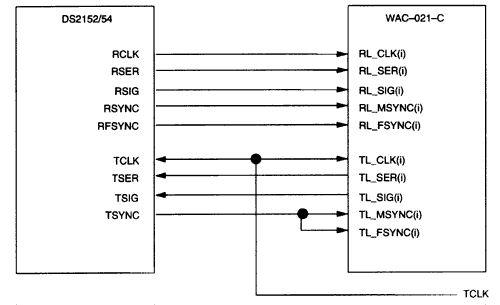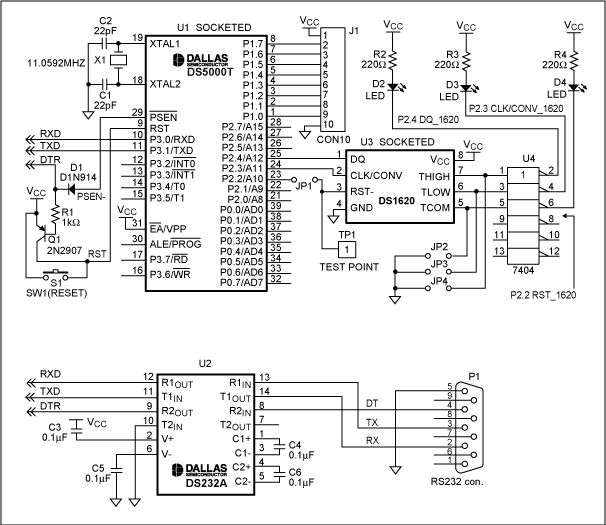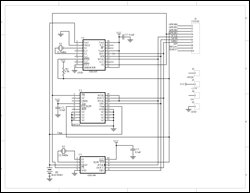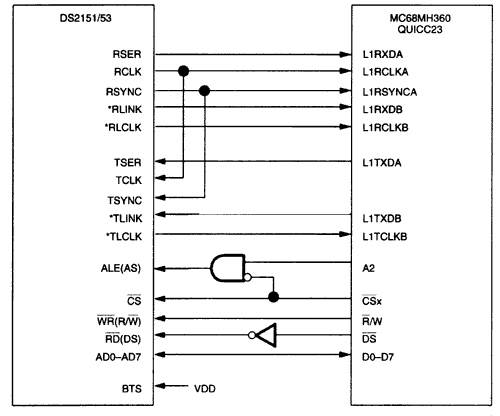電子發(fā)燒友網(wǎng)為你提供Maxim(Maxim)MAX1620EEE+T相關(guān)產(chǎn)品參數(shù)�、數(shù)據(jù)手冊��,更有MAX1620EEE+T的引腳圖、接線圖���、封裝手冊�、中文資料�����、英文資料���,MAX1620EEE+T真值表�����,MAX1620EEE+T管腳等資料���,希望可以幫助到廣大的電子工程師們。
2023-09-01 18:46:32

2SK1620(L) 2SK1620(S) 數(shù)據(jù)表
2023-06-28 20:36:27 0
0 2SK1620(L)�����、2SK1620(S)數(shù)據(jù)表
2023-06-27 19:56:47 0
0 測量通道的標(biāo)定麻煩��,溫度測量的準(zhǔn)確度也相對較低���。所以,本設(shè)計采用Dallas公司生產(chǎn)的數(shù)字溫度傳感器DS1620���。 (1)DS1620的特點�����。數(shù)字溫度傳感器DS1620是Dallas公司推出的新型
2009-08-21 15:07:07
與DS1620數(shù)字溫度傳感器IC的通信通過簡單的3線接口實現(xiàn)�。此接口與摩托羅拉 SPI 之間存在許多差異?接口����。然而,只需對DS1620進行一些小的硬件和軟件修改����,就可以有效地集成到基于SPI的系統(tǒng)中。
2023-05-16 11:28:10 392
392 
2SK1620(L) 2SK1620(S) 數(shù)據(jù)表
2023-05-11 20:11:51 0
0 2SK1620(L)���、2SK1620(S)數(shù)據(jù)表
2023-05-08 20:16:36 0
0 本應(yīng)用筆記向用戶介紹DS5000(兼容8051)微控制器與DS1620數(shù)字溫度傳感器的接口軟件。DS1620通過3線串行數(shù)字接口進行通信��。提供的軟件代碼用于讀取DS1620溫度寄存器�����,并根據(jù)計數(shù)器和斜率累加器寄存器的數(shù)據(jù)計算高分辨率結(jié)果����。
2023-03-01 15:29:44 215
215 
DS1620數(shù)字溫度計和恒溫器提供3路溫控器輸出(THIGH, TLOW和TCOM)�,可用于控制風(fēng)扇或加熱器��。有兩個用戶可編程閾值(TH和 TL) 控制三個輸出��。當(dāng)測得的溫度超過TH/ 7高被驅(qū)動得很高���。當(dāng)測得的溫度低于T時L/ 7低被驅(qū)動得很高�。
2023-01-16 10:27:12 452
452 
DS1620通過計算低溫度系數(shù)振蕩器在由高溫度系數(shù)振蕩器確定的柵極周期內(nèi)經(jīng)過的時鐘周期數(shù)來測量溫度��。計數(shù)器預(yù)設(shè)了對應(yīng)于-55°C的基數(shù)��。 如果計數(shù)器在柵極周期結(jié)束前達到零���,則溫度寄存器(也預(yù)設(shè)為-55°C值)將遞增���,表示溫度高于-55°C�����。
2023-01-10 10:52:27 509
509 
電子發(fā)燒友網(wǎng)為你提供()DS1620S/T&R相關(guān)產(chǎn)品參數(shù)�����、數(shù)據(jù)手冊,更有DS1620S/T&R的引腳圖���、接線圖、封裝手冊�����、中文資料�����、英文資料����,DS1620S/T&R真值表���,DS1620S/T&R管腳等資料,希望可以幫助到廣大的電子工程師們���。
2022-11-02 08:23:13

電子發(fā)燒友網(wǎng)為你提供()DS1620S-D1/T&R相關(guān)產(chǎn)品參數(shù)、數(shù)據(jù)手冊���,更有DS1620S-D1/T&R的引腳圖、接線圖��、封裝手冊��、中文資料��、英文資料��,DS1620S-D1/T&R真值表,DS1620S-D1/T&R管腳等資料���,希望可以幫助到廣大的電子工程師們。
2022-11-02 08:23:12

電子發(fā)燒友網(wǎng)為你提供()DS1620S-D1相關(guān)產(chǎn)品參數(shù)����、數(shù)據(jù)手冊�,更有DS1620S-D1的引腳圖�、接線圖����、封裝手冊�����、中文資料�、英文資料,DS1620S-D1真值表���,DS1620S-D1管腳等資料,希望可以幫助到廣大的電子工程師們���。
2022-11-02 08:23:07

電子發(fā)燒友網(wǎng)為你提供()DS1620S+T&R相關(guān)產(chǎn)品參數(shù)���、數(shù)據(jù)手冊��,更有DS1620S+T&R的引腳圖、接線圖��、封裝手冊�、中文資料���、英文資料�����,DS1620S+T&R真值表,DS1620S+T&R管腳等資料���,希望可以幫助到廣大的電子工程師們。
2022-10-28 10:11:33

電子發(fā)燒友網(wǎng)為你提供()DS1620S+相關(guān)產(chǎn)品參數(shù)�、數(shù)據(jù)手冊���,更有DS1620S+的引腳圖、接線圖�、封裝手冊���、中文資料���、英文資料,DS1620S+真值表�,DS1620S+管腳等資料�,希望可以幫助到廣大的電子工程師們���。
2022-10-28 10:10:48

電子發(fā)燒友網(wǎng)為你提供()DS1620相關(guān)產(chǎn)品參數(shù)�、數(shù)據(jù)手冊��,更有DS1620的引腳圖���、接線圖�、封裝手冊����、中文資料、英文資料����,DS1620真值表�����,DS1620管腳等資料�����,希望可以幫助到廣大的電子工程師們��。
2022-10-28 10:09:05

電子發(fā)燒友網(wǎng)為你提供()DS1620S相關(guān)產(chǎn)品參數(shù)、數(shù)據(jù)手冊��,更有DS1620S的引腳圖���、接線圖、封裝手冊���、中文資料���、英文資料��,DS1620S真值表�����,DS1620S管腳等資料����,希望可以幫助到廣大的電子工程師們��。
2022-10-28 10:09:05

電子發(fā)燒友網(wǎng)為你提供ADI(ti)DC1620A-G相關(guān)產(chǎn)品參數(shù)�����、數(shù)據(jù)手冊�����,更有DC1620A-G的引腳圖、接線圖���、封裝手冊、中文資料��、英文資料�����,DC1620A-G真值表��,DC1620A-G管腳等資料,希望可以幫助到廣大的電子工程師們���。
2021-09-03 12:00:03
電子發(fā)燒友網(wǎng)為你提供ADI(ti)DC1620A-F相關(guān)產(chǎn)品參數(shù)、數(shù)據(jù)手冊�����,更有DC1620A-F的引腳圖、接線圖�����、封裝手冊��、中文資料�、英文資料�����,DC1620A-F真值表,DC1620A-F管腳等資料�����,希望可以幫助到廣大的電子工程師們��。
2021-09-03 12:00:03
電子發(fā)燒友網(wǎng)為你提供ADI(ti)DC1620A-E相關(guān)產(chǎn)品參數(shù)、數(shù)據(jù)手冊��,更有DC1620A-E的引腳圖�、接線圖���、封裝手冊�、中文資料����、英文資料,DC1620A-E真值表���,DC1620A-E管腳等資料�����,希望可以幫助到廣大的電子工程師們。
2021-09-03 12:00:03
電子發(fā)燒友網(wǎng)為你提供ADI(ti)DC1620A-D相關(guān)產(chǎn)品參數(shù)���、數(shù)據(jù)手冊���,更有DC1620A-D的引腳圖����、接線圖���、封裝手冊����、中文資料�、英文資料����,DC1620A-D真值表,DC1620A-D管腳等資料���,希望可以幫助到廣大的電子工程師們。
2021-09-03 12:00:03
電子發(fā)燒友網(wǎng)為你提供ADI(ti)DC1620A-C相關(guān)產(chǎn)品參數(shù)�、數(shù)據(jù)手冊����,更有DC1620A-C的引腳圖�����、接線圖��、封裝手冊、中文資料��、英文資料�,DC1620A-C真值表,DC1620A-C管腳等資料����,希望可以幫助到廣大的電子工程師們���。
2021-09-03 12:00:03
電子發(fā)燒友網(wǎng)為你提供ADI(ti)DC1620A-B相關(guān)產(chǎn)品參數(shù)、數(shù)據(jù)手冊�����,更有DC1620A-B的引腳圖、接線圖��、封裝手冊���、中文資料、英文資料�����,DC1620A-B真值表���,DC1620A-B管腳等資料,希望可以幫助到廣大的電子工程師們����。
2021-09-03 12:00:03
電子發(fā)燒友網(wǎng)為你提供ADI(ti)DC1620A-K相關(guān)產(chǎn)品參數(shù)、數(shù)據(jù)手冊��,更有DC1620A-K的引腳圖���、接線圖���、封裝手冊����、中文資料����、英文資料����,DC1620A-K真值表����,DC1620A-K管腳等資料,希望可以幫助到廣大的電子工程師們����。
2021-09-03 11:00:03
電子發(fā)燒友網(wǎng)為你提供ADI(ti)DC1620A-J相關(guān)產(chǎn)品參數(shù)�、數(shù)據(jù)手冊�����,更有DC1620A-J的引腳圖����、接線圖����、封裝手冊�、中文資料、英文資料�����,DC1620A-J真值表,DC1620A-J管腳等資料����,希望可以幫助到廣大的電子工程師們����。
2021-09-03 11:00:03
電子發(fā)燒友網(wǎng)為你提供ADI(ti)DC1620A-H相關(guān)產(chǎn)品參數(shù)����、數(shù)據(jù)手冊���,更有DC1620A-H的引腳圖、接線圖�����、封裝手冊�、中文資料�、英文資料�����,DC1620A-H真值表����,DC1620A-H管腳等資料�,希望可以幫助到廣大的電子工程師們�����。
2021-09-03 11:00:03
電子發(fā)燒友網(wǎng)為你提供ADI(ti)DC1620A-I相關(guān)產(chǎn)品參數(shù)��、數(shù)據(jù)手冊,更有DC1620A-I的引腳圖�、接線圖、封裝手冊��、中文資料���、英文資料�����,DC1620A-I真值表��,DC1620A-I管腳等資料,希望可以幫助到廣大的電子工程師們�。
2021-09-03 11:00:03
電子發(fā)燒友網(wǎng)為你提供ADI(ti)DC1620A-L相關(guān)產(chǎn)品參數(shù)��、數(shù)據(jù)手冊�����,更有DC1620A-L的引腳圖、接線圖�、封裝手冊、中文資料���、英文資料,DC1620A-L真值表����,DC1620A-L管腳等資料����,希望可以幫助到廣大的電子工程師們。
2021-09-03 11:00:03
電子發(fā)燒友網(wǎng)為你提供ADI(ti)DC1620A-T相關(guān)產(chǎn)品參數(shù)���、數(shù)據(jù)手冊��,更有DC1620A-T的引腳圖��、接線圖�����、封裝手冊�����、中文資料、英文資料��,DC1620A-T真值表�����,DC1620A-T管腳等資料,希望可以幫助到廣大的電子工程師們��。
2021-09-02 19:00:04
電子發(fā)燒友網(wǎng)為你提供ADI(ti)DC1620A-R相關(guān)產(chǎn)品參數(shù)�、數(shù)據(jù)手冊�����,更有DC1620A-R的引腳圖�、接線圖����、封裝手冊���、中文資料��、英文資料�����,DC1620A-R真值表,DC1620A-R管腳等資料���,希望可以幫助到廣大的電子工程師們。
2021-09-02 18:00:04
電子發(fā)燒友網(wǎng)為你提供ADI(ti)DC1620A-Q相關(guān)產(chǎn)品參數(shù)�����、數(shù)據(jù)手冊,更有DC1620A-Q的引腳圖�����、接線圖����、封裝手冊��、中文資料�、英文資料�,DC1620A-Q真值表����,DC1620A-Q管腳等資料��,希望可以幫助到廣大的電子工程師們。
2021-09-02 18:00:04
電子發(fā)燒友網(wǎng)為你提供ADI(ti)DC1620A-P相關(guān)產(chǎn)品參數(shù)�����、數(shù)據(jù)手冊,更有DC1620A-P的引腳圖�、接線圖��、封裝手冊����、中文資料��、英文資料,DC1620A-P真值表��,DC1620A-P管腳等資料,希望可以幫助到廣大的電子工程師們���。
2021-09-02 18:00:04
電子發(fā)燒友網(wǎng)為你提供ADI(ti)DC1620A-O相關(guān)產(chǎn)品參數(shù)、數(shù)據(jù)手冊��,更有DC1620A-O的引腳圖��、接線圖����、封裝手冊、中文資料���、英文資料,DC1620A-O真值表����,DC1620A-O管腳等資料��,希望可以幫助到廣大的電子工程師們�����。
2021-09-02 18:00:04
電子發(fā)燒友網(wǎng)為你提供ADI(ti)DC1620A-N相關(guān)產(chǎn)品參數(shù)、數(shù)據(jù)手冊��,更有DC1620A-N的引腳圖、接線圖����、封裝手冊、中文資料���、英文資料���,DC1620A-N真值表,DC1620A-N管腳等資料����,希望可以幫助到廣大的電子工程師們���。
2021-09-02 18:00:04
電子發(fā)燒友網(wǎng)為你提供ADI(ti)DC1620A-M相關(guān)產(chǎn)品參數(shù)、數(shù)據(jù)手冊�����,更有DC1620A-M的引腳圖��、接線圖、封裝手冊�、中文資料、英文資料�,DC1620A-M真值表��,DC1620A-M管腳等資料�,希望可以幫助到廣大的電子工程師們�。
2021-09-02 18:00:04
電子發(fā)燒友網(wǎng)為你提供ADI(ti)DC1620A-S相關(guān)產(chǎn)品參數(shù)�、數(shù)據(jù)手冊��,更有DC1620A-S的引腳圖����、接線圖��、封裝手冊、中文資料����、英文資料,DC1620A-S真值表�����,DC1620A-S管腳等資料����,希望可以幫助到廣大的電子工程師們。
2021-09-02 17:00:04
電子發(fā)燒友網(wǎng)為你提供ADI(ti)DC1620A-A相關(guān)產(chǎn)品參數(shù)�、數(shù)據(jù)手冊�,更有DC1620A-A的引腳圖�����、接線圖��、封裝手冊、中文資料�、英文資料����,DC1620A-A真值表,DC1620A-A管腳等資料��,希望可以幫助到廣大的電子工程師們��。
2021-08-07 01:00:01
DC1620A-設(shè)計文件
2021-06-08 11:02:31 2
2 ADIS1620xPCB評估板
2021-05-31 13:39:10 1
1 ADIS1620x/PCB評估板
2021-05-20 21:10:33 8
8 ADIS1620x/PCB評估板
2021-05-20 20:29:17 7
7 DC1620A-設(shè)計文件
2021-04-09 20:46:50 0
0 DS1620是一片8引腳的片內(nèi)建有溫度測量并轉(zhuǎn)換為數(shù)字值的集成電路�����,他集溫度傳感�����、溫度數(shù)據(jù)轉(zhuǎn)換與傳輸、溫度控制等功能于一體�����。測溫范圍:-55~+125℃�����,精度為0.5℃�����。該芯片非常容易與單片機連接,實現(xiàn)溫度的測控應(yīng)用�,單獨做溫度控制器使用時�����,可不用外加其他輔助元件。
2021-03-24 10:46:30 1653
1653 
DS1620是Dallas公司推出的數(shù)字溫度測控器件�。 2.7~ 5.0V供電電壓����,測量溫度范圍為-55~+125℃�,9位數(shù)字量表示溫度值,分辨率為0.5℃�。在0~+70℃精確度為0.5℃���, -40
2020-07-20 14:41:41 1334
1334 
電子發(fā)燒友網(wǎng)為你提供TI(ti)INA1620相關(guān)產(chǎn)品參數(shù)、數(shù)據(jù)手冊��,更有INA1620的引腳圖���、接線圖�、封裝手冊�、中文資料����、英文資料�,INA1620真值表��,INA1620管腳等資料,希望可以幫助到廣大的電子工程師們���。
2018-11-02 18:06:06

DSP systems_ interfacing with the outside world
2017-10-20 14:46:32 3
3 Interconnections between the DS2151 or DS2153 and the Motorola MC68MH360 (QUICC32) are shown
2017-04-10 10:26:49 4
4 后跟上升沿的序列。對于數(shù)據(jù)輸入���,數(shù)據(jù)必須是有效的時鐘周期的上升沿期間����。數(shù)據(jù)位輸出時鐘的下降沿��,并保持有效通過上升沿。閱讀從DS1620數(shù)據(jù)時�,DQ引腳變?yōu)楦咦杩範(fàn)顟B(tài)���,時鐘高。采取積極低RST低在通信周期將導(dǎo)致DQ到一個高阻抗?fàn)顟B(tài)�����,從而結(jié)束
2017-04-07 15:36:51 11
11 tm1620 data sheet
2017-03-20 11:01:27 69
69 DSP systems_ interfacing with the outside world
2016-05-06 15:13:28 7
7 Interfacing with C: Programming Real-World Applications
C接口:編程現(xiàn)實世界的應(yīng)用����,教你如何進行專業(yè)的C編程��!
2015-11-10 17:39:54 13
13 DS1620 是DALLAS 半導(dǎo)體公司的 溫度傳感器 家庭成員之一�,是新型數(shù)字式溫度傳感器。其測溫范圍寬(-55℃~+125℃)����,感應(yīng)能力精確�,不需A/D 轉(zhuǎn)換電路���,直接將溫度值轉(zhuǎn)換成數(shù)字量��。其外
2011-07-18 16:48:43 28
28 DS1620是DALLAS半導(dǎo)體公司的溫度傳感器家庭成員之一,是新型數(shù)字式溫度傳感器。
2011-05-05 18:18:08 4556
4556 
This application report is a summary of the application note titled Interfacing the TLC5510Analog
2010-06-02 09:42:00 7
7 摘要:本文介紹DALLAS公司產(chǎn)品DS1620芯片技術(shù)指標(biāo)及性能��,可以方便地與單片機組成測溫、控溫儀器儀表����。關(guān)鍵詞:溫度傳感及控制器;單片機�����;便攜測控溫儀
2010-05-13 09:22:11 29
29 如何制作數(shù)字溫度計
現(xiàn)在您對Stamp和液晶顯示屏有了初步的了解�,我們再加一個元件就可以制作一支數(shù)字溫度計��。 制作數(shù)字溫度計需要用到芯片DS1620。 該芯片包含:
2009-08-21 16:10:46 6736
6736 a built-in LCD and RS-485 communicat ion por t . I t is designed around Atmel’s AT89C2051 processor, a DS1620 digital thermometer/ the
2009-06-27 11:34:06 75
75 DS1620家用電扇控制電路圖
2009-06-08 09:13:27 2633
2633 
DS1620溫度傳感器-控制器及風(fēng)扇自控電路圖
2009-06-03 15:30:18 1070
1070 
DS1620家用電扇控制電路圖
2009-06-03 15:29:30 638
638 
DS1620恒溫電路圖
2009-06-03 15:28:51 708
708 
Interfacing the DS18X20/DS1822 1-Wire Temperature Sensor in a Microcontroller Environment
2009-05-08 11:37:54 20
20 介紹了數(shù)字式溫度測控芯片在數(shù)字放射系統(tǒng)中X射線采集板溫度自動控制中的應(yīng)用�����。采用PC和單獨控制雙模塊分別控制溫度��,利用半導(dǎo)體傳感器DS1620進行四路溫度采集,通過單片機和PC
2009-05-05 20:43:22 1003
1003 
Abstract: This application note describes how the DS2141A, DS2143, DS2151, and DS2153 interface
2009-04-29 10:21:40 713
713 
Abstract: This application note describes how the DS2141A, DS2143, DS2151, and DS2153 interface
2009-04-29 10:20:01 961
961 
Abstract: This application note provides a logical diagram of the interface of the Dallas Semiconductor/Maxim DS2151 and DS2153 to the PMC-Sierra 7345.
2009-04-29 10:19:22 627
627 
Abstract: This application note describes how the DS2141A, DS2143, DS2151, and DS2153 interface
2009-04-29 10:18:40 456
456 
Abstract: Different values of resistor can be selected between DS2153 or DS2154 single chip
2009-04-29 10:16:57 1009
1009 
Abstract: Application Note 321 provides an example circuit for interfacing the Dallas Semiconductor
2009-04-29 10:16:18 938
938 
processor to the DS2141Q or the DS2143Q Dallas Semiconductor T1 or E1 framers. The application note covers interfacing both the address and da
2009-04-29 10:15:34 676
676 
Abstract: The following application note shows simple circuits using the DS1814 MicroMonitor.
2009-04-23 15:11:01 637
637 
Abstract: This application note introduces the user to software for interfacing a DS5000 (8051
2009-04-23 15:02:56 853
853 
the Maxim DS2760 Battery Monitor and Protector IC to a microcontroller. The DS5000 microcontroller module is used for example purposes. Both h
2009-04-23 14:43:28 1027
1027 
compatible) microcontroller to the DS1620 digital temperature sensor. The DS1620 communicates via a 3-wire serial digital interface. Software co
2009-04-23 14:40:07 1655
1655 
) is ideal for applications such as data logging. This application note examines temperature-measuring techniques interfacing to the DS1620 dig
2009-04-23 10:28:46 1068
1068 
Abstract: The following application note shows simple circuits using the DS1814 MicroMonitor.
2009-04-23 09:25:16 571
571 
Abstract: This application note provides an example of hardware and software for interfacing
2009-04-21 09:53:58 920
920 
Abstract: This application note shows connection of the DS2151 T1 single chip transceiver
2009-04-20 10:44:04 998
998 
Semiconductor/Maxim DS2151 T1 single chip transceiver (SCT) and DS2153 E1 SCT to the AT&T T7270.
2009-04-20 10:43:22 563
563 
Abstract: Application note 303 provides information on connecting the DS2151 and DS2153 single chip
2009-04-20 10:42:38 796
796 
Abstract: This application note describes how the DS2141A, DS2143, DS2151, and DS2153 interface
2009-04-20 10:41:16 720
720 
Semiconductor/Maxim DS2151 T1 single chip transceiver (SCT) and DS2153 E1 SCT to the Siemens PEB20320.
2009-04-20 10:38:51 780
780 
Abstract: Interfacing between the Hitachi HD64570 and the DS2151 for T1 lines or the DS2153 for E1 lines. MCSI-0 and MCS-1 are in Bit Synchronous
2009-04-20 10:38:06 698
698 
Abstract: This application note describes how the DS2141A, DS2143, DS2151, and DS2153 interface
2009-04-20 10:37:00 867
867 
Semiconductor/Maxim DS2151 T1 single chip transceiver (SCT) and DS2153 E1 SCT to the Motorola MC68MH360 QUICC32. Interconnections be
2009-04-20 10:35:31 517
517 
Abstract: This application note will describe the interconnections between the DS2152 or DS
2009-04-20 10:34:47 651
651 
Abstract: Application Note 321 provides an example circuit for interfacing the Dallas Semiconductor
2009-04-20 10:33:30 565
565 
Abstract: This application note provides a logical diagram of the interface of the Dallas Semiconductor/Maxim DS2151 and DS2153 to the PMC-Sierra 7345.
2009-04-20 10:32:06 627
627 
Abstract: This application note describes how the DS2141A, DS2143, DS2151, and DS2153 interface
2009-04-20 10:31:04 505
505 
Abstract: Different values of resistor can be selected between DS2153 or DS2154 single chip
2009-04-20 10:30:24 578
578 
processor to the DS2141Q or the DS2143Q Dallas Semiconductor T1 or E1 framers. The application note covers interfacing both the address and da
2009-04-20 10:29:40 553
553 
processor to the DS2155 T1/E1/J1 Single Chip Transceiver (SCT). The application note covers interfacing both the address and data processor bus
2009-04-20 09:46:53 544
544 
) is ideal for applications such as data logging. This application note examines temperature-measuring techniques interfacing to the DS1620 dig
2009-04-18 10:48:58 526
526 
Abstract: This application note introduces the user to software for interfacing a DS5000 (8051
2009-04-18 10:28:04 657
657 
INTRODUCTIONThere are several methods available for interfacing 1-WireTM devices
2009-04-18 10:18:30 28
28 Abstract: The DS1620 digital thermometer and thermostat provides three thermostat outputs (THIGH
2009-04-17 11:45:50 494
494 
The HT1620 is a 128 pattern (32�4), memory mapping,and multi-function LCD driver. The S/W
2008-11-11 09:49:40 30
30

 電子發(fā)燒友App
電子發(fā)燒友App

































































評論